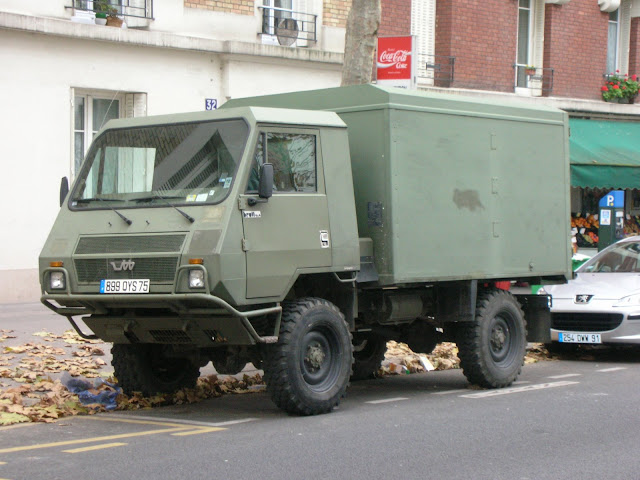1960 - Fondation par Marcel Brimont, maréchal-ferrant spécialisée dans le machinisme agricole – bennes et remorques de Brimont SA, implantée à Rethel, Ardennes, France.
En septembre 1974, la société LATIL-BATIGNOLLES rétrocède la fabrication et la commercialisation des tracteurs LATIL à la société BRIMONT.
Un mois après l'accord de cession, BRIMONT sort le premier tracteur LATIL des chaînes de montage des usines de Reims-Prunay.
Brimont assemble également des séries de camions : Brimont ETR, Appache dès 1978,
Les mécaniques sont 100 % françaises.
Durant les années 1980, PPM construit aussi des gros camions 4x4.
Le plus gros camion Brimont sera l'Apache. Ici dans sa version "CCFS" - Camion Citerne Feux Forêts Spécialisé.

L'Apache est un camion citerne "feux de forêt" lourd, mis au point par Brimont, PPM et Camiva.
Sa citerne de 6.000 litres est surbaissée et cloisonnée pour lui garantir une bonne stabilité "hors route". Il a été, de longues années durant, le matériel emblématique des UIISC.
A l'époque l'Apache est déjà doté d'une direction assistée permettant au conducteur une conduite plus aisée. La cabine est renforcée et comprend 4 places frontales. L'Apache est doté d'un refroidissement de la cabine et des pneus par aspertion d'eau.
Sur le plan technique et en quelques chiffres:
- Poids en charge: 17 Tonnes
- A vide: 10,5 tonnes
- PTAC: 19 Tonnes
Les dimensions:
- Hauteur: 3m
- Largeur: 2,5m
- Longueur: 7,5m
Sur le plan mécanique:
- 4 roues directrices et motrices
- vitesse max 85 km/h
- Rampe 50% en continu
- Dévers 20% en continu
- RVI suralimenté (double turbo)
- Puissance maxi: 274 cv
- 6 vitesses avant
- 3 vitesses arrière
- système de décrabotage du pont avant
- blocage des différentiels avant et arrière
- suspensions avant et arrière par amortisseurs et ressorts à lames
- roues avant assistées
- roues arrière hydraulique par vérins commandé électriquement au tableau de bord et indépendant du volant et permettant des braquages courts et la marche en crabe.
- cabine 4 places et insonorisée
- siège conducteur suspendu et réglable en hauteur
- grille et arceaux assurant la protection de la cabine et des roues par aspertion d'eau
- treuil de halage d'une longueur de 50 m et d'un diamètre de 16 mm commandé électriquement depuis le tableau de bord pour une meilleure sécurité. Commande mécaniquede secours sur le châssis
Equipement Incendie:
- capacité citerne eau 6 000L. Forme spéciale enveloppant le châssis permettant de rabaisser le centre de gravité et composé de cloisons anti-ballant.
- pompe 1000 L/min, pression 15 bars, amorçage automatique
- canon télécommandé de l'intérieur de la cabine par un boîtier de commande
Dans les années 1970, Brimont va aussi construire des engins de Génie civil, notamment une benne articulée, la BB9
Au faîte de sa gloire, près de 400 personnes travaillaient pour Brimont.
En 1987, Brimont passe sous le contrôle de Bergerat-Monnoyeur.
• Pour information : En 1967 Potain & Poclain associent leurs technologies de levage et hydrauliques et forment PPM : « Potain, Poclain Manutention ».
• Pour information : En 1988, Rachat de PPM par le groupe « Legris Industries »
En mars 1989, Reprise de Brimont par PPM, l’entreprise s’appelle dès lors «
Brimont PM »
En 1992, c'est une chute importante (50 % de moins par rapport à 1991) des marchés d'Etat (armée et sapeurs-pompiers) qui va entraîner un plan de licenciement au sein de la société ardennaise Brimont PPM division engins.
Fin de la production de véhicules 4x4 en 1993.
La division Brimont agraire, spécialisée dans les remorques agricoles n'est pas touchée.
Depuis juillet 2009, Brimont - qui ne fabrique que des remorques, fait partie du groupe Arden Vérins.





























































































